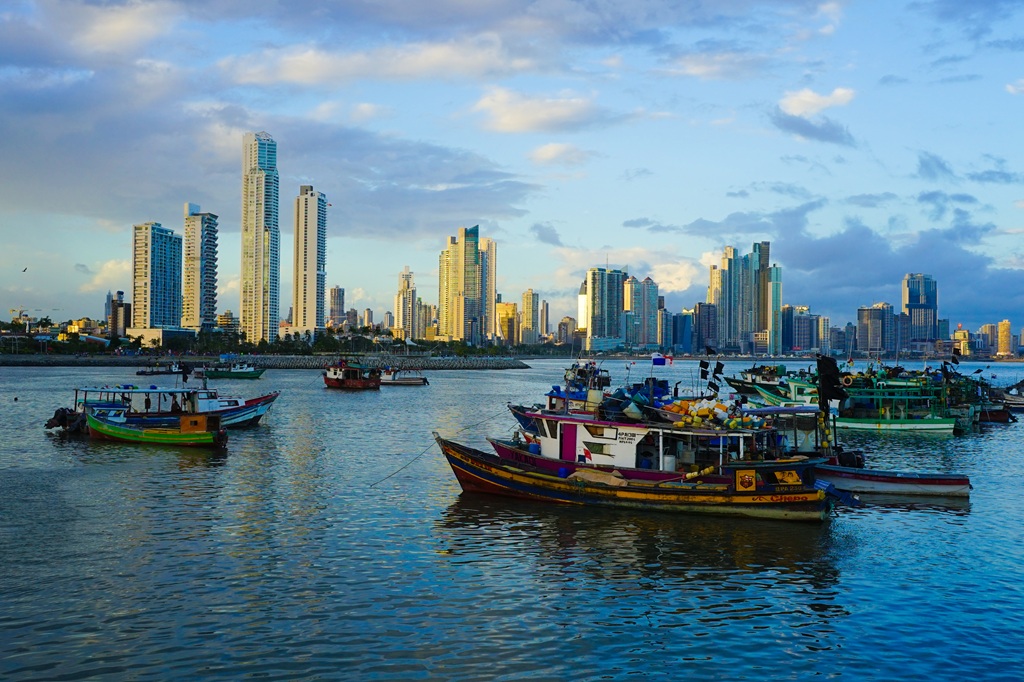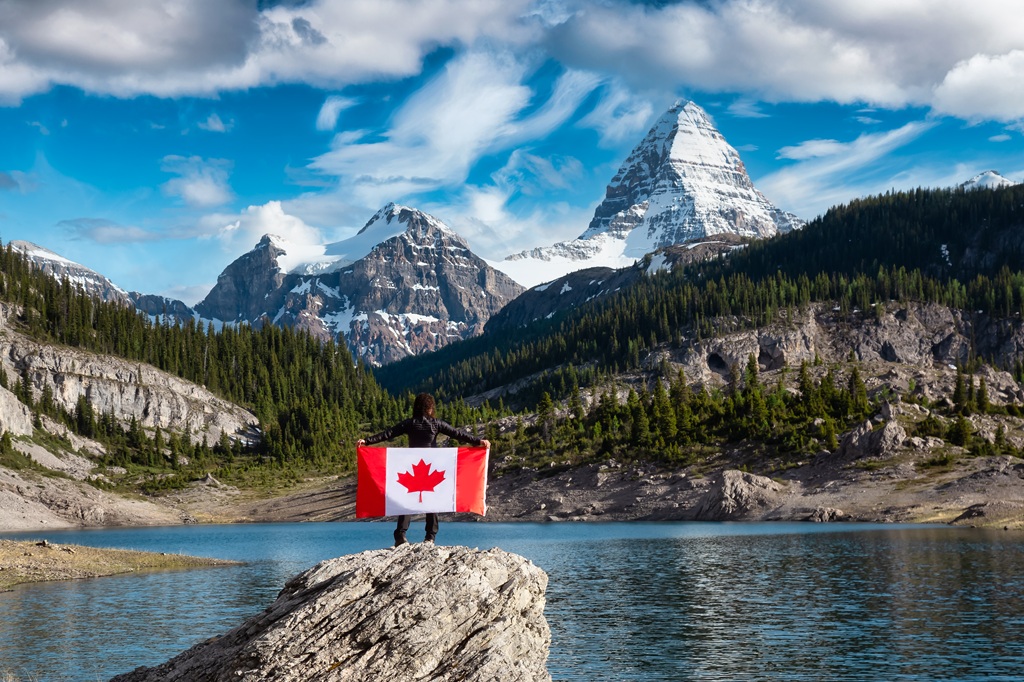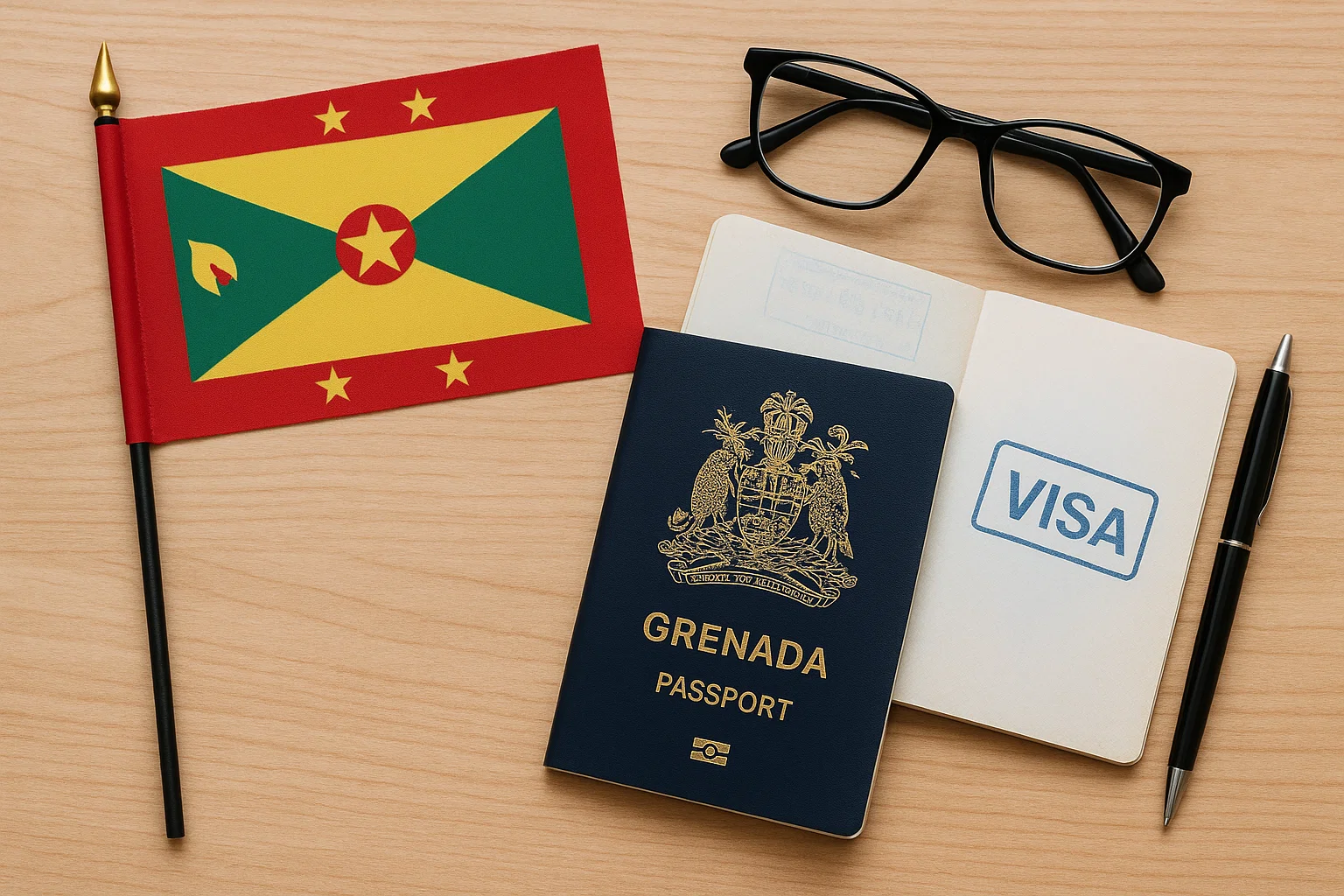More Americans are choosing to move abroad than ever before.
Rising living costs, expensive healthcare, and the desire for a calmer lifestyle are pushing many to explore how to move out of the US and start a new life abroad.
Whether your dream is to retire by the coast, work remotely from a foreign country, or raise a family in a safer environment, living abroad is no longer just an idea; it’s a growing reality for thousands of Americans.
Of course, relocating permanently requires more than a one-way ticket.
You need to understand where you can gain legal residency, which visa and residency options fit your goals, and how everyday life abroad truly feels once you settle in.
Every foreign country has different visa rules, income requirements, and healthcare systems, and some countries grant U.S. citizens easier entry paths than others.
This guide explains the essential steps for Americans moving abroad. From choosing the most appropriate visa (such as a retirement visa, digital nomad visa, or temporary resident visa) to preparing documents, budgeting for the cost of living, and selecting the best country to begin your new life.
If you’ve ever wondered, “Can I really live abroad?” —the answer is yes. This guide will show you exactly how to make it happen.
Essential Steps Before You Move
Essential Steps Before You Move
Moving abroad is exciting, but it requires careful planning.
Before applying for visas or selling your belongings, take time to clarify your goals, finances, and documents. The right preparation ensures a smoother transition and a less stressful experience when you arrive in your new country.
1. Decide Why You’re Moving
Be clear about your motivation. Are you applying for a retirement visa, exploring digital nomad visas, or relocating your family for a better quality of life?
Your reason for moving will determine which visa options fit best. From a temporary visa to a residence visa that can later lead to permanent residency.
2. Set a Realistic Budget
Research the cost of living in your destination. Compare your income, savings, and expected expenses like housing, groceries, and private health insurance.
Countries such as Portugal, Costa Rica, and Malaysia offer a high quality of life with affordable healthcare and a comfortable lifestyle for about $1,500–$2,000 per month, while others may require more.
3. Gather Your Documents Early
Visa processing moves faster when your paperwork is complete. Most countries require:
- A valid U.S. passport (six months minimum before expiration)
- Proof of income or foreign bank accounts
- An FBI background check
- International health insurance or proof of private insurance
- Certified copies of birth and marriage certificates (apostilled if necessary)
Gathering these documents early simplifies your residency permit or residency visa application process.
4. Research Healthcare and Safety
Healthcare systems and safety standards vary across many countries.
Always review official rankings and expat feedback before you commit.
Look for destinations with public healthcare or universal healthcare systems, stable governments, and low crime rates.
5. Understand Tax and Residency Rules
Even after moving abroad, U.S. citizens must still pay taxes and report their worldwide income.
Familiarize yourself with the Foreign Earned Income Exclusion (FEIE), foreign tax credit, and tax treaties that can reduce your tax obligations.
It’s wise to work with a tax professional who understands cross-border filings and international transfers.
6. Create a 6–12 Month Timeline
Relocation is a process, not an event. Allow three to six months for long term visa approvals and time to organize housing, finances, and travel.
Setting a realistic timeline makes it easier to handle residency fees, visa applications, and the emotional transition of leaving the U.S. for your new life abroad.
Visa Options for Long-Term Relocation
Visa Options Explained In Detail
Retirement Visa
Many countries grant American retirees special retirement visas if they can show a stable pension or passive income.
These are among the easiest routes to permanent residency and, eventually, citizenship. Portugal’s D7 Visa, Panama’s Pensionado Visa, and Costa Rica’s Pensionado program are popular examples of accessible residency permits.
Most governments require proof of a consistent monthly income between $1,000 and $2,500, private health insurance, and a clean criminal record.
Applicants can often include a spouse or dependents. After several renewals, many retirees may apply for a permanent resident visa or even full citizenship.
Investment Visa
Investment migration programs, often known as Golden Visa programs, are designed for people who wish to obtain legal residency through financial contribution.
This may include purchasing real estate, investing in local businesses, or supporting government-approved funds.
Minimum investments typically range from €250,000 to €500,000 depending on the destination.
Portugal, Greece, and Spain remain the top European countries for this route.
These programs provide long-term stability, potential property returns, and in many cases, a pathway to dual citizenship after five years of continuous legal residence.
Digital Nomad Visa
Digital nomad visas are ideal for remote workers who earn their income from outside the country where they plan to live.
They are flexible, affordable, and often processed faster than residency visas.
Popular destinations such as Portugal, Spain, Costa Rica, Malaysia, and Greece offer one- to two-year digital nomad permits.
Applicants usually need proof of income between $2,000–$3,000 per month, foreign bank accounts, and international health insurance.
Some destinations, like Costa Rica, even offer tax exemptions on foreign income.
It’s an ideal appropriate visa for those testing life abroad before committing to permanent relocation.
Family Reunification Visa
If your spouse or close relative already holds legal residency abroad, a family reunification visa can make it easier to join them. These residency visas allow family members to live, work, and study in the new country.
To qualify, you’ll need proof of relationship, financial stability, and a shared residence plan.
Residency fees and processing times vary but often take two to four months. Countries like Spain, Portugal, and Panama also extend public healthcare access to family members of legal residents.
Work Visa
A work visa is intended for professionals with a confirmed job offer or in-demand skills.
This is one of the most structured paths to long-term legal residency and possibly permanent residency.
Countries such as Canada, Germany, and New Zealand have clear programs for skilled applicants.
You’ll need an employment contract, verified qualifications, and sometimes a local language certificate.
While competitive, it’s a strong path for those wanting to integrate into a foreign country’s workforce and community while enjoying full social security benefits.
Top 10 Countries to Move from the U.S. in 2025
Portugal is often the first serious choice for Americans moving abroad because it offers a high quality of life, a warm climate, and one of the lowest costs of living in Western Europe.
English is widely spoken in major cities, and the country ranks high for safety and work life balance.
The D7 residency visa is ideal for retirees and individuals with passive income, while the Digital Nomad Visa caters to remote workers earning online.
Both options grant access to public healthcare, and private plans are also affordable compared to U.S. standards, making affordable healthcare one of Portugal’s biggest draws.
After maintaining legal residency for several years, you can apply for permanent residency, and later for full citizenship.
This opens freedom of movement across European countries, giving you the flexibility to live abroad anywhere in the EU.
Spain continues to attract Americans moving abroad for its Mediterranean climate, excellent quality of life, and vibrant culture.
The country blends modern cities like Madrid and Barcelona with peaceful coastal towns where life moves at a slower pace which is perfect for improving work life balance.
Spain’s residency visa options include the Non-Lucrative Visa for retirees and the Digital Nomad Visa for remote workers earning from abroad.
Both provide access to Spain’s public healthcare system, which is consistently ranked among the best in Europe, and affordable healthcare options in private clinics are widely available.
The cost of living in Spain is lower than most European countries, especially outside major cities.
After maintaining legal residency for five years, Americans can apply for permanent residency, opening the door to eventual citizenship and full integration into the EU.
Spain’s welcoming expat communities make it one of the easiest transitions for Americans starting a new life abroad.
Mexico continues to attract U.S. citizens who want a lower cost of living, excellent food, warm weather, and close proximity to home.
Many expat communities thrive here, offering familiar comforts alongside rich local culture which is perfect for those starting a new life abroad without giving up easy travel back to the States.
The Temporary Resident Visa is often approved faster than most European countries’ visas and can transition to permanent residency after several years of continuous stay.
It’s a flexible residency visa for retirees, remote professionals, or entrepreneurs seeking long-term legal residency in a welcoming foreign country.
Mexico’s public healthcare and affordable healthcare systems make it easy to access quality medical care, and many doctors in larger cities speak English.
While safety varies by region, popular destinations like Mérida, Querétaro, Lake Chapala, Puebla, and parts of Mexico City are known for strong communities, modern infrastructure, and a relaxed quality of life that appeals to Americans looking to live abroad comfortably.
Costa Rica is one of the most popular countries for Americans moving abroad, thanks to its tropical scenery, political stability, and welcoming expat communities.
Known for its “Pura Vida” lifestyle, it’s a top destination for retirees, remote professionals, and families looking for a slower pace and better quality of life.
The Pensionado Visa, Costa Rica’s official retirement visa, requires proof of at least $1,000 in monthly pension or foreign income, while the Rentista Visa accepts other steady earnings or savings.
Both options allow long-term legal residency and can lead to permanent residency after several renewals.
The cost of living is much lower than in major U.S. cities, and both public healthcare and affordable healthcare in private clinics are excellent.
English is widely spoken in expat communities, and the government encourages remote workers through its digital nomad visa program.
For those seeking a new life abroad surrounded by nature, Costa Rica offers one of the easiest and most rewarding relocation paths.
Panama has become one of the easiest countries for Americans moving abroad, combining a stable economy, warm climate, and modern infrastructure with the convenience of using the U.S. dollar.
The country is well-known for its quality of life, strong expat communities, and low cost of living, especially outside Panama City.
The Pensionado Visa, Panama’s flagship retirement visa, is open to retirees earning at least $1,000 in foreign income each month.
It offers generous benefits, including discounts on healthcare, entertainment, and transportation.
For non-retirees, the Friendly Nations Visa provides a clear path to legal residency, often leading to permanent residency after two years.
Both public healthcare and affordable healthcare in private hospitals meet international standards, and many doctors are U.S.-trained.
The process is straightforward, and residency fees are lower than most European countries.
With its tropical beaches, vibrant cities, and strong financial system, Panama is a top choice for Americans seeking to live abroad comfortably with minimal bureaucracy.
Greece offers a timeless mix of sunshine, history, and Mediterranean ease, making it one of the best European countries for Americans planning to live abroad.
Known for its slower pace and exceptional quality of life, Greece appeals to retirees, investors, and remote workers alike.
The Digital Nomad Visa allows Americans to stay up to two years while working remotely, while the Golden Visa program offers legal residency through property investment starting from €250,000 which is one of the lowest thresholds in Europe.
Both routes can lead to permanent residency and, eventually, full citizenship for those who maintain continuous legal residence.
The cost of living in Greece is significantly lower than in most Western nations, and both public healthcare and affordable healthcare options in private hospitals are accessible and reliable.
English is widely spoken in cities like Athens and Thessaloniki, and expat communities are growing on islands such as Crete, Rhodes, and Corfu. For Americans looking to build a new life abroad, Greece delivers beauty, value, and opportunity in equal measure.
Malaysia is one of Asia’s best-kept secrets for Americans looking to live abroad affordably.
The country combines modern infrastructure, cultural diversity, and strong expat communities with a low cost of living and year-round tropical weather.
English is widely spoken, and most urban areas are foreigner-friendly, making relocation smooth for retirees and remote professionals alike.
The Malaysia My Second Home (MM2H) program is a long-term residency visa that welcomes foreigners with proof of savings or steady foreign income.
It’s a popular retirement visa for those who want flexibility without high residency fees.
The visa allows multiple entries, property ownership, and access to local public healthcare or affordable healthcare in private hospitals that meet international standards.
Malaysia’s quality of life is high compared to its cost, and international health insurance is easy to obtain.
Many expat communities have formed in Kuala Lumpur, Penang, and Johor Bahru, offering support for those beginning a new life abroad.
While permanent residency requires longer stays, the MM2H program provides one of Asia’s most stable paths to living overseas comfortably.
Thailand remains one of the most popular destinations for Americans choosing to live abroad, thanks to its welcoming culture, stunning beaches, and affordable lifestyle.
The country’s cost of living is among the lowest in Asia, making it ideal for retirees, remote workers, and long-term travelers looking for a tropical base with modern comforts.
The Thailand Long-Term Resident Visa is designed for investors, professionals, and retirees seeking extended stays.
It provides a 10-year pathway to legal residency for applicants who meet income or investment requirements.
For retirees, the retirement visa (Non-Immigrant O-A or O-X) allows stays of one to five years, with proof of pension or savings.
Thailand’s healthcare system is known for world-class hospitals and affordable healthcare.
Both public and private options are available, and medical tourism continues to grow due to excellent service quality at reasonable costs.
Many expat communities thrive in cities like Chiang Mai, Bangkok, and Hua Hin, offering social networks and easy integration.
With its rich culture, excellent food, and high quality of life, Thailand is a top destination for those seeking a new life abroad with comfort, color, and community.
Ecuador is one of South America’s most attractive destinations for Americans seeking to live abroad comfortably on a modest budget.
The country offers an excellent quality of life, low cost of living, and mild year-round climate in cities like Cuenca and Loja, both known for their growing expat communities.
The Pensionado Visa, Ecuador’s version of the retirement visa, is among the most accessible in the region.
Applicants only need to show proof of foreign income (typically around $1,275 per month) from a pension or retirement plan. The process is straightforward, and the visa can lead to permanent residency after 21 months of continuous stay.
Ecuador’s public healthcare system is open to residents, while private affordable healthcare is available in major cities.
Prescription costs and doctor visits are often a fraction of U.S. prices, making it ideal for retirees or digital professionals looking to stretch their income.
With its friendly locals, stunning Andean scenery, and low living costs, Ecuador remains one of the best countries for starting a new life abroad without sacrificing comfort or accessibility.
Canada consistently ranks among the world’s best places to live abroad thanks to its strong economy, political stability, and inclusive healthcare system.
For Americans seeking to relocate to a new country without major cultural barriers, Canada is a natural fit — English is one of its official languages, and daily life feels familiar yet distinctly more relaxed.
The country offers multiple visa and residency options, including skilled worker programs, residency visas, and permanent residency routes through Express Entry.
Families, retirees, and entrepreneurs can all find suitable paths depending on their income, experience, or investment level.
Over time, permanent residents can apply for Canadian citizenship, gaining full access to the country’s public healthcare, education, and work benefits.
Canada’s quality of life is world-class, but the cost of living varies widely.
Major cities like Toronto or Vancouver are expensive, while smaller cities and rural areas remain more affordable.
The healthcare system provides universal coverage, while private health insurance can supplement for faster access to specialists.
With strong expat communities, low crime rates, and a reputation for fairness, Canada remains a top destination for Americans planning a long-term move and a fresh start abroad.
How to Choose the Right Country for Your Move
Relocating abroad isn’t just about where the beaches are prettiest or the rent is cheapest.
It’s about finding a country that fits your lifestyle, budget, and long-term goals.
When narrowing down your options, consider the following:
FAQs
Conclusion
Moving out of the U.S. permanently is more than just a change of address. It’s a chance to redefine your lifestyle, priorities, and future. Whether you’re drawn to Portugal’s safety, Mexico’s affordability, or Greece’s Mediterranean charm, there’s a destination that fits every dream and budget.
Start by choosing the visa that aligns with your goals, prepare your documentation early, and give yourself time to adjust to new cultures. The process might feel complex, but the reward is freedom; a slower pace, lower stress, and a life that feels truly yours.
Your next home abroad is waiting.







.webp)

.webp)

.webp)





.webp)



.jpg)










.svg)






